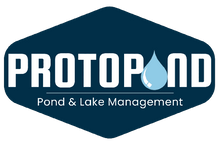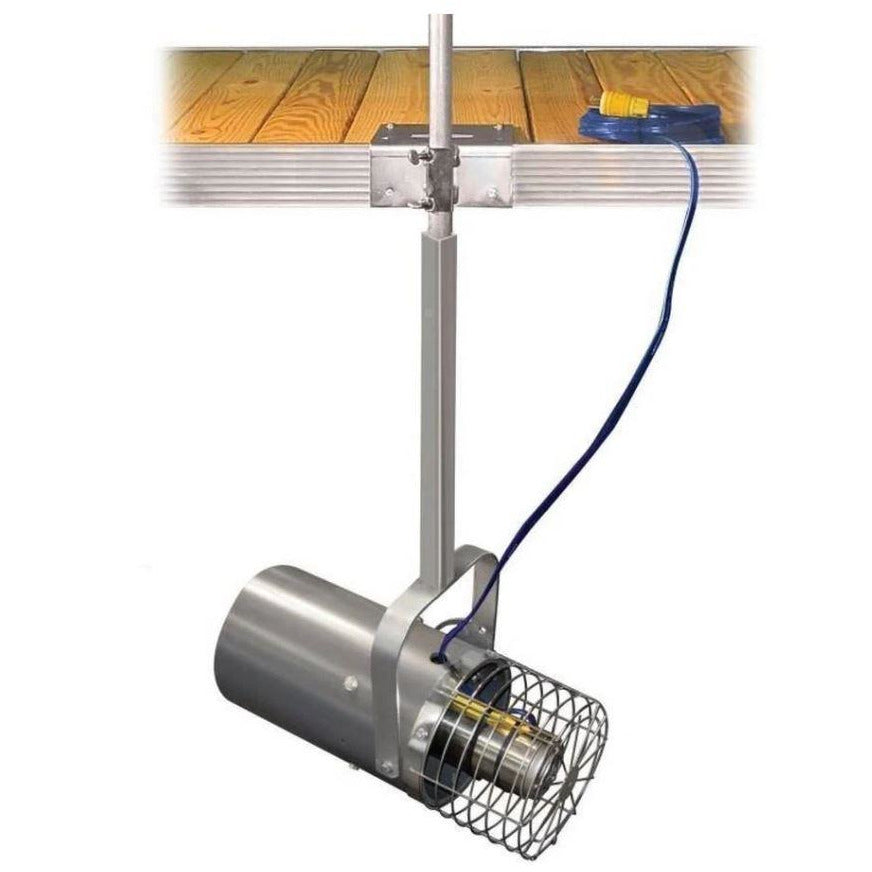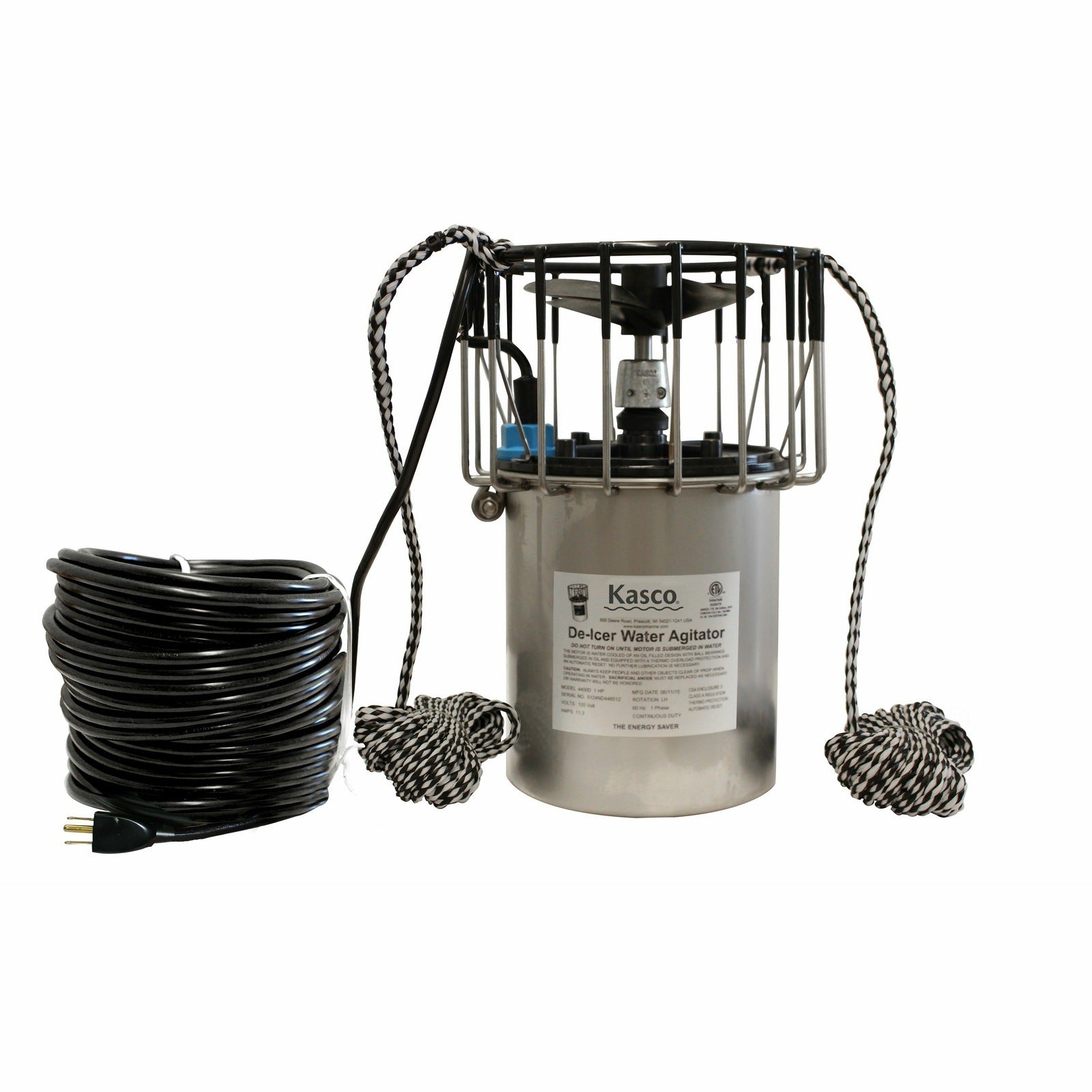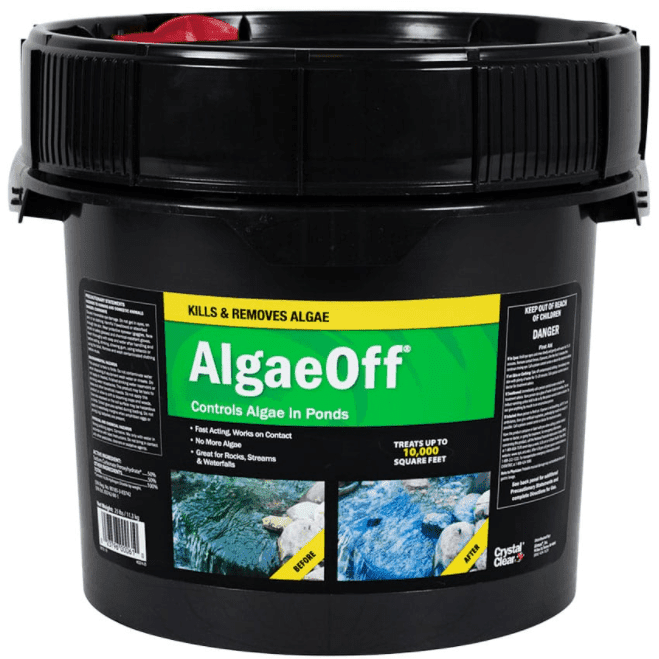What is a Pond Aerator
Winter brings a magical transformation to your outdoors, but for pond owners, it also brings the challenge of safeguarding their water features. As the temperature drops and ice begins to form on the water's surface, pond heating keeps your pond alive and thriving. In this guide, we'll reveal the art of heating a pond, not just as a means of warmth, but a shield for your fish from the harsh cold, maintaining the delicate balance of your pond's ecosystem.
Understanding Pond Heating Needs
Understanding the unique heating needs of your pond is the first step towards creating a perfect aquatic environment. Fish, like us, have temperature preferences, and maintaining specific water temperatures is crucial for their well-being. The ideal range, typically between 50-70°F, ensures their comfort and reduces stress, promoting overall health and vitality.
Factors influencing heat loss play a pivotal role in determining the heating strategy for your pond. The size, depth, location, and local climate all contribute to the rate at which your pond loses heat. A smaller pond may lose heat more rapidly than a larger one, and the depth affects how well the heat is retained. Factors like geographical location and climate patterns also impact the overall heat dynamics.
Empower yourself as a pond owner by assessing your specific pond's needs and considering your budget. Recognize the unique characteristics that make your pond an individual ecosystem and tailor your heating approach accordingly.
Exploring Heating Options
When it comes to pond heating, there are several options, each with its unique set of benefits and considerations.
1)Electric Heaters:
- Submersible Heaters: These heaters immerse themselves in the pond, offering precise temperature control. While efficient and safe, they may come with higher costs due to continuous operation.
- Inline Heaters: Placed outside the pond, inline heaters provide an alternative approach. Though cost-effective and easy to maintain, they may offer slightly less precise temperature control.
Both options provide effective heating but differ in their applications and costs. Submersible heaters offer a direct solution, while inline heaters cater to those seeking cost efficiency.
2)Eco-Friendly Solar Pond Heating:
Harnessing the power of the sun, Solar Pond Heating emerges as an eco-friendly option. The setup process involves strategically placing solar panels to maximize sunlight exposure. Key considerations include understanding the pond's sunlight patterns and determining the appropriate panel size. Efficient implementation requires attention to these critical factors.
3)Natural Method:
The natural method works with the pond's ecosystem. Deepening the pond, adding insulation through covers and floating plants contribute to heat retention. While limited in effectiveness, these methods offer long-term cost savings and nurture the overall health of the pond. It's a holistic approach, balancing warmth with the sustainability of the pond's natural dynamics.
4)Geothermal Heating and Heat Pumps for Larger Ponds
For larger ponds, advanced options like geothermal heating and heat pumps exist. Geothermal heating taps into the Earth's stable temperatures, while heat pumps use air or water to generate warmth. Ideal for expansive water bodies, these technologies present efficient alternatives for maintaining optimal temperatures in larger pond environments. Consider these as powerful tools for those with substantial aquatic landscapes.
Selecting the Right Equipment
Selecting the right equipment for your pond is crucial for a cozy and efficient aquatic environment. Begin by measuring the size of your pond and the desired temperature increase. Ensure the heater aligns with your water volume. Compare various heaters, considering features like thermostats and timers for optimal control. For those facing complex setups, don't hesitate to seek advice from pond professionals. Their expertise can guide you in tailoring the perfect heating solution, ensuring your pond remains warm for both you and your fish.
Winter Pond Care:
Effortless pond heating begins with simple installation steps for submersible heaters and solar panels. Ensure submersibles are properly placed, and solar panels capture ample sunlight. Prioritize regular maintenance and safety checks to sustain a warm pond.
As we wrap up our journey into effective pond heating, reflect on the benefits it brings, from happy fish to improved water quality. Tailor your approach to match your pond's unique characteristics. Share your heating tales and inquiries with us. Let's build a warm and thriving community at the heart of ProtoPond.













